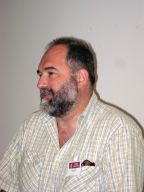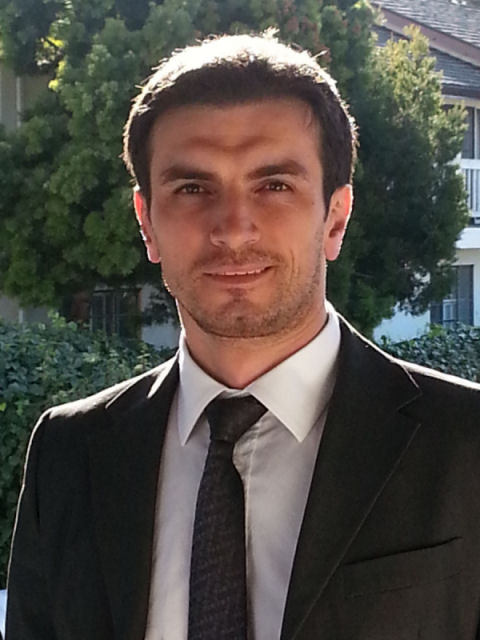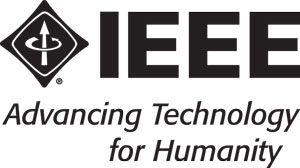Split, Croatia
The presentation starts with some general aspects of modeling in electromagnetics and EMC. The introductory part deals with some commonly used analytical and numerical methods. First, a crash-course on the theory of wire antennas and related numerical methods for the solution integral relationships in both frequency and time domain will be given. Applications pertaining related to dipoles, Yagi-Uda arrays and logarithmic-periodic dipole antennas (LPDA) will be discussed accompanied with some illustrative computational examples. Furthermore, full wave (antenna) models for various thin wire structures, from rather simple to realistic complex geometries, will be presented. This will be followed by the analysis of overhead and buried lines, respectively, which will be carried out using both rigorous full wave models and approximate transmission line (TL) approach. Particular attention will be focused to the analysis of PLC (Power Line Communications) configurations and modeling of lightning channel. The transient analysis of realistic grounding systems with particular emphasis to wind turbines will be undertaken, as well. Then presentation will also deal with human exposure to non-ionizing electromagnetic fields. Low frequency, frequency and transient exposures will be outlined. The presentation will end up with some topics in magnetohydrodynamics related to the modeling of fusion related phenomena.
 |
Dragan Poljak was born on 10 October 1965. He received his BSc in 1990, his MSc in 1994 and PhD in electrical engineering in 1996 from the University of Split, Croatia. He is the Full Professor at Department of Electronics, Faculty of electrical engineering, mechanical engineering and naval architecture at the University of Split, and he is also Adjunct Professor at Wessex Institute of Technology. His research interests include frequency and time domain computational methods in electromagnetics, particularly in the numerical modelling of wire antenna structures, and numerical modelling applied to environmental aspects of electromagnetic fields. |
|
To date Professor Poljak has published nearly 200 journal and conference papers in
the area of computational electromagnetics, seven authored
books and one edited book, by WIT Press,
Southampton-Boston., and one book by Wiley, New Jersey.
Professor Poljak is a member of IEEE, a member of the
Editorial Board of the journal Engineering Analysis with
Boundary Elements, and co-chairman of many WIT International
Conferences. He is also editor of the WIT Press Series
Advances in Electrical Engineering and Electromagnetics. In
June 2004, professor Poljak was awarded by the National
Prize for Science. In 2013 he was awarded by the Nikola
Tesla Prize for achievements in Technical Sciences.
In 2011 professor Poljak became a member of WIT Bord of Directors and the Vice-dean for research at the Faculty of electrical engineering, mechanical engineering and naval architecture. In June 2013 professor Poljak became a member of the board of the Croatian Science Foundation. |
|
Electrical and Electronics Engineering Department Istanbul, Turkey
This study is related with the problem of protection of electronics systems from the current and voltage surges. Various natural phenomena like lightning, electrostatic discharge, breakdown effects in appliances, switching, can be the reason for such surges. The surges, inevitably accompanied by onset of electromagnetic waveforms, are able to entail dangerous failure of microwave appliances, navigation and defense systems, communication networks, modern medical equipments, computers, and so on. Furthermore, nowadays it is also possible to develop effective ultra-wide band pulse generators in a very small volume which can be used as a tool for electromagnetic terrorism. The classical time-harmonic field approach meet essential difficulties in solving these problems. In this tutorial lecture, a layout of the evolutionary approach to electromagnetics (EAE), an alternative to the classical time-harmonic theory, will be presented. New problems it can cover, which are inaccessible to the time-harmonic analysis will be discussed. The layout is organized as follows. First, formulation of the problem is given, where the initial conditions for the fields and the causality principle are involved as well. A general scheme of the method and modal basis problem for a cylindrical cavity are presented. This will be followed by definition of the modal field expansions with the time-dependent amplitudes. Exact solutions for the modal amplitudes will be presented in the form of the convolution integrals where a given signal function can be a variant. Then presentation will deal with some extensions of the EAE for the Lorentz and Debye dispersive media. Furthermore, graphical results from several implementations of the EAE for the cavity problems illustrating the time dependence of the irrotational and solenoidal modes will be exhibited. Abstract can be downloaded here.
 |
Fatih Erden received his B.Sc. degree in Electrical and Electronics Engineering from the Turkish Naval Academy, Istanbul, in 2000. After graduating from the Turkish Naval Academy, he served on several Turkish Navy warships for 4 years as a Navy Officer until he received his M.Sc. degree in Electronics Engineering from the Gebze Institute of Technology, Turkey, in 2004. After getting his M.Sc. degree, Erden served on the Turkish Navy Guided Missile Test Station, in Istanbul, as a Test Officer, until he received his PhD degree from the same Institute in 2009. Erden has been serving as an Assistant Professor in the Turkish Naval Academy since August 2010, with the rank of Navy Lieutenant |
| Commander. From 2011 to 2012, he was on leave from Turkish Naval Academy to work as a Postdoctoral Research Associate at the Computational Electromagnetics Laboratory of University of Illinois at Urbana-Champaign, Electrical and Computer Engineering Department. Recently, he has been collaborating with Professor Oleg A. Tretyakov from the Gebze Institute of Technology as a Post-Doctoral Researcher. His research interests include time-domain solution of electromagnetic fields with the Evolutionary Approach to Electromagnetics (EAE), and scattering problems. Erden is a member of IEEE. | |
Zagreb, Croatia
Fusion electricity can start market penetration around 2050. This requires an ambitious, yet realistic roadmap towards the demonstration of electricity production by 2050 (F. Romanelli, P. Barabaschi, D. Borba, G. Federici, L. Horton, R. Neu, D. Stork, H. Zohm A roadmap to the realization of Fusion Energy (2012)). This talk describes the main technical challenges on the path to fusion energy. For all of the challenges candidate solutions have been developed and the goal of the programme is now to demonstrate that they will also work at the scale of a reactor. The roadmap has been developed within a goal-oriented approach articulated in eight different Missions. For each Mission the critical aspects for reactor application, the risks and risk mitigation strategies, the level of readiness now and after ITER and the gaps in the programme have been examined with involvement of experts from the ITER International Organization, Fusion for Energy, EFDA Close Support Unites and EFDA Associates. High-level work packages for the roadmap implementation have been prepared and the resources evaluated. ITER is the key facility in the roadmap and its success represents the most important overarching objectives of the EU programme. A demonstration fusion power plant (DEMO), producing net electricity for the grid at the level of a few hundreds MW is foreseen to start operation in the early 2040s. Following ITER, it will be the single step to a commercial fusion power plant. The talk will also address the needs in the area of education and training and basic research.
 |
Tonči Tadić was born on 10 March 1962. He received his BSc in 1987, his MSc in 1992 and PhD in Physics in 1995 from the Ruđer Bošković Institute and University of Zagreb, Croatia. He is research associate at Ruđer Bošković Institute. His research interests include interactions of accelerated ions with materials, ion beam analyses and ion beam modification of materials. To date Tonči Tadić has published 31 journal papers in these areas of research. Tonči Tadić was Member of Parliament of Croatia (Hrvatski Sabor) 2000-2008. He is coordinator of Croatian nuclear fusion research programme and member of General Assembly of the EUROFUSION Consortium, |
|
member of European „Fusion for Energy“ Governing Board
(F4E GB) and member of Euratom Programme Committee Fusion.
In July 2013 Tonči Tadić was appointed by for a member of
Euratom Scientific and Technical Committee (STC). In
1997-1998 he was guest-researcher at ONRI-AIST, Ikeda,
Osaka, Japan as STA post-doctoral fellow. Tonči Tadić is
recipient of Japanese Order of the Rising Sun. |
|
Emerging Internet Quality of Service (QoS) mechanisms are expected to enable wide spread use of real time services such as VoIP and videoconferencing. The "best effort" Internet delivery cannot be used for the new multimedia applications. New technologies and new standards are necessary to offer Quality of Service (QoS) for these multimedia applications. Therefore new communication architectures integrate mechanisms allowing guaranteed QoS services as well as high rate communications. The service level agreement with a mobile Internet user is hard to satisfy, since there may not be enough resources available in some parts of the network the mobile user is moving into. The emerging Internet QoS architectures, differentiated services and integrated services, do not consider user mobility. QoS mechanisms enforce a differentiated sharing of bandwidth among services and users. Thus, there must be mechanisms available to identify traffic flows with different QoS parameters, and to make it possible to charge the users based on requested quality. The integration of fixed and mobile wireless access into IP networks presents a cost effective and efficient way to provide seamless end-to-end connectivity and ubiquitous access in a market where the demand for mobile Internet services has grown rapidly and predicted to generate billions of dollars in revenue. This tutorial covers to the issues of QoS provisioning in heterogeneous networks and Internet access over future wireless networks as well as ATM, MPLS, DiffServ, IntServ frameworks. It discusses the characteristics of the Internet, mobility and QoS provisioning in wireless and mobile IP networks. This tutorial also covers routing, security, baseline architecture of the inter-networking protocols and end to end traffic management issues.
 |
Pascal LORENZ (lorenz@ieee.org) received his M.Sc. (1990) and Ph.D. (1994) from the University of Nancy, France. Between 1990 and 1995 he was a research engineer at WorldFIP Europe and at Alcatel-Alsthom. He is a professor at the University of Haute-Alsace, France, since 1995. His research interests include QoS, wireless networks and high-speed networks .He is the author/co-author of 3 books, 3 patents and 200 international publications in refereed journals and conferences. He was Technical Editor of the IEEE Communications Magazine Editorial Board |
|
(2000- 2006), Chair of Vertical Issues in
Communication Systems Technical Committee Cluster
(2008-2009), Chair of the Communications Systems Integration
and Modeling Technical Committee (2003-2009) and Chair of
the Communications Software Technical Committee (2008-2010).
He has served as Co-Program Chair of IEEE WCNC'2012,
ICC'2004 and ICC'2017, tutorial chair of VTC'2013 Spring and
WCNC'2010, track chair of PIMRC'2012, symposium Co-Chair at
Globecom 2011-2007, ICC 2010-2008 and ICC'2014. He has
served as Co-Guest Editor for special issues of IEEE
Communications Magazine, Networks Magazine, Wireless
Communications Magazine, Telecommunications Systems and
LNCS. He is senior member of the IEEE, IARIA fellow and
member of many international program committees. He has
organized many conferences, chaired several technical
sessions and gave tutorials at major international
conferences. He was IEEE ComSoc Distinguished Lecturer Tour
during 2013-2014. |
|
Pierre Bonnet, Phd
CNRS, UMR 6602, Pascal Instiute, F-63177 AUBIERE
In the electromagnetic compatibility (EMC) literature, designing electronic large systems is mostly based upon “worst” cases approaches while security margins exist to ensure the system safety. In accordance with standards, this mainly sets two problems: the need for precise and efficient tools to quantify more realistic EMC margins, jointly with trustworthy reliability levels. Basically, some environmental parameters (geometry, material, sources) are not deterministically known and some random variations lead to uncertainties. The purpose of EMC is to study the unintentional/intentional generation; propagation and reception of electromagnetic (EM) energy with reference to related undesired effects (EM interference, EMI). In this context, the development of a simple and clear methodology to integrate randomness into EMC modeling is crucial since the EMC of complex systems within critical devices cannot rely on the sole use of deterministic approaches. Quantifying the effects of uncertainties on the overall system behavior becomes nowadays of great importance in regards to EMC standards and this field of research has gained a growing interest over the past few years. Non-exhaustive state-of-the-art EMC stochastic issues contain different philosophies to integrate this problem for instance involving printed circuit boards (PCBs), cable coupling and effects of uncertain High Intensity Radiated Fields (HIRFs). EMC group from Pascal Institute (PI), Blaise Pascal University (BPU), was a pioneer in the integration of uncertainties for EMC applications. The gradual insertion of the proposed stochastic techniques for different issues from antennas characterization, EM diffraction, bio-electromagnetic purposes and EMC measurements will broadly validate these methods in computational and experimental electromagnetics. Parallel to proposed stochastic methods, we will explore the use of relevant sensitivity analysis tools to precisely assess the sensitivity of the different random parameters.
 |
Sébastien Lalléchère received PhD degree in electromagnetism from Blaise Pascal University (BPU), Clermont-Ferrand, France in 2006. Since 2007, he is an Associate Professor at BPU and Pascal Institute, France. His research interests cover the fields of electromagnetic compatibility with a focus on complex & reverberating environments, computational electromagnetics and numerical modeling for stochastic & reliability issues in electrical engineering. He is actively involved in different research projects |
|
in antennas, RF and
EMC, co-supervised 2 PhD students and was author or
co-author of more than 60 papers in international
conferences and journals. |
|
 |
Pierre Bonnet received the Ph.D. degree in electromagnetism from the University Blaise Pascal, Clermont in 1998. From 1999 to 2008 he was an assistant Professor with the Department of Physics and with the Institut Pascal at the University Blaise Pascal. He is currently a Professor in this University. His research interests are in the area of numerical electromagnetic with an emphasis on electromagnetic compatibility (EMC)/electromagnetic interference (EMI) problems, time reversal, source identification and stochastic approaches. |


